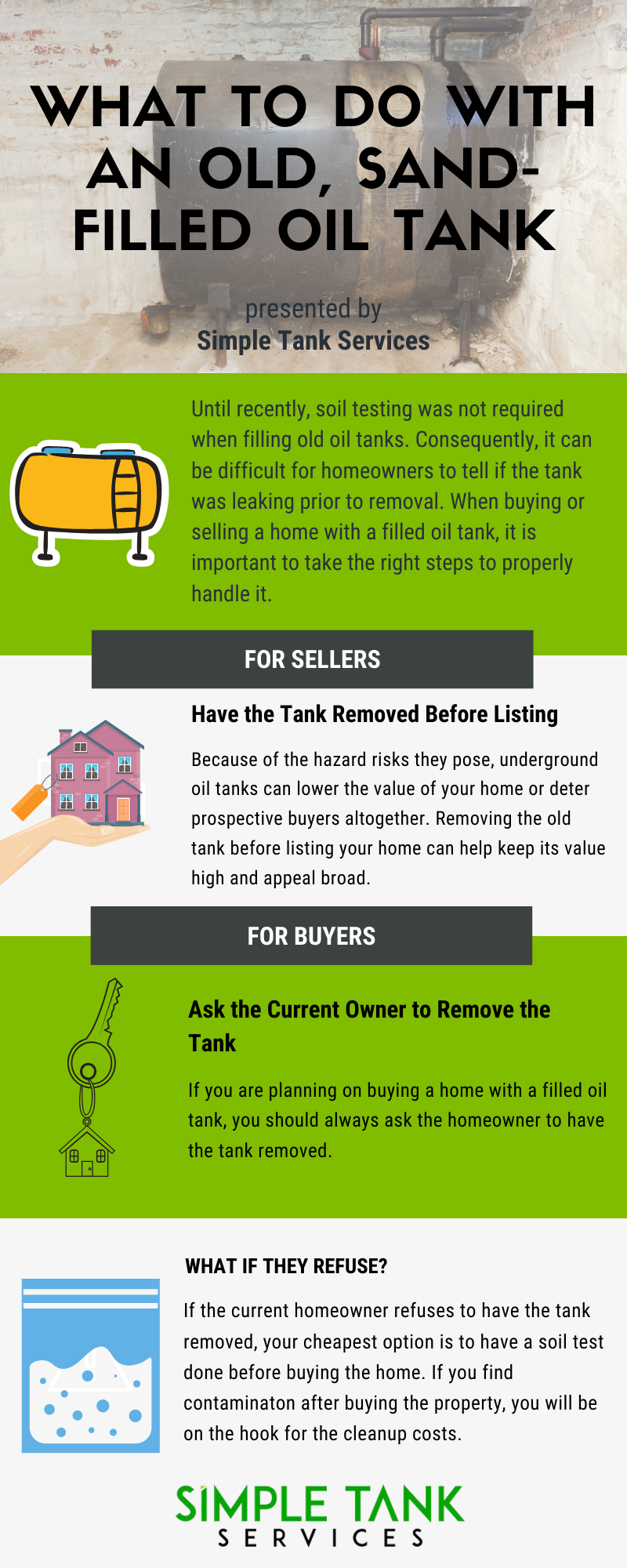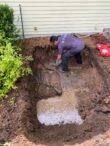Clients ask us at Simple Tank about their filled oil tanks. Most, think that they are meeting standard requirements regarding their oil tank. However, this is false. When that tank was filled in place, most likely, it was not required to test the soil around the tank before it was filled. A contractor came out ten years ago, they cut the top of the tank open, sucked the oil out, and filled it with sand. The client is given the documentation. However, there is no way to tell if that tank is or was leaking.
Selling a Home With a Filled Oil Tank
Unfortunately, a lot of clients selling their homes will sell them with filled oil tanks. They assume that these oil tanks are fine since they have documentation. The oil tank filled with sand could be still creating problems for the home and the soil surrounding it could be contaminated. The new buyer will be leery of any potential problems that could be happening, and with good reason. Every single buyer is going to want the tank removed.
Remove the Tank
If you are planning on selling a property with an oil tank that has been filled with sand, your best option is to have it removed. The best thing to do is pull the oil tank before the home is listed on the open market. This will prevent you from being under any unnecessary time constraints if you are presented with an active buyer. Homes with underground oil tanks are very difficult to sell, due to the complications that can arise from them. They will significantly make your home less appealing to both buyers and realtors. If realtors pull away from your home, that means fewer potential buyers. As someone selling your home, you want to get what your home is worth. However, keeping an underground oil tank on the property will give buyers an excuse to make the offer low.
What to Do as a Buyer
If you are planning on buying a property with an underground oil tank that has been filled with sand, you will want to ask the homeowner to have it removed. If they are not willing to remove the tank, you will want to have a contractor do a soil test. It is the most cost-effective way to find if there has been any contamination. Along with this, you want a contractor who offers soil testing with a guarantee. If you buy that house without inspection and without a guarantee, you will be responsible it anything arises. For instance, you could buy the home and then pull the tank. You find contamination in the soil. The town and the seller are not responsible. Protect yourself by doing a soil test.
What if the Current Homeowner Refuses to Remove it?
If the current homeowner refuses to have the tank removed, your best option is to have a soil test done before buying the home. With this investigation, Simple Tank can provide you with a fixed price to remove the tank and clean up any potential contamination. We can even arrange to have the work done before you close and we can get paid by the seller at the closing.

Regardless if you are a seller or a buyer, your best course of action is to have the oil tank removed to prevent any further problems and to assess any current damage. You will want a quality and professional contractor to come in to remove your oil tank. Simple Tank can remove the oil tank, as well as provide you with soil samples.
For more information, contact us today.


It’s good to know that a filled oil tank could still be a problem and should probably be removed. My parents passed away recently and we’re getting ready to sell their home. Finding out what state their oil tank is in and having it removed might make selling the home a bit easier.